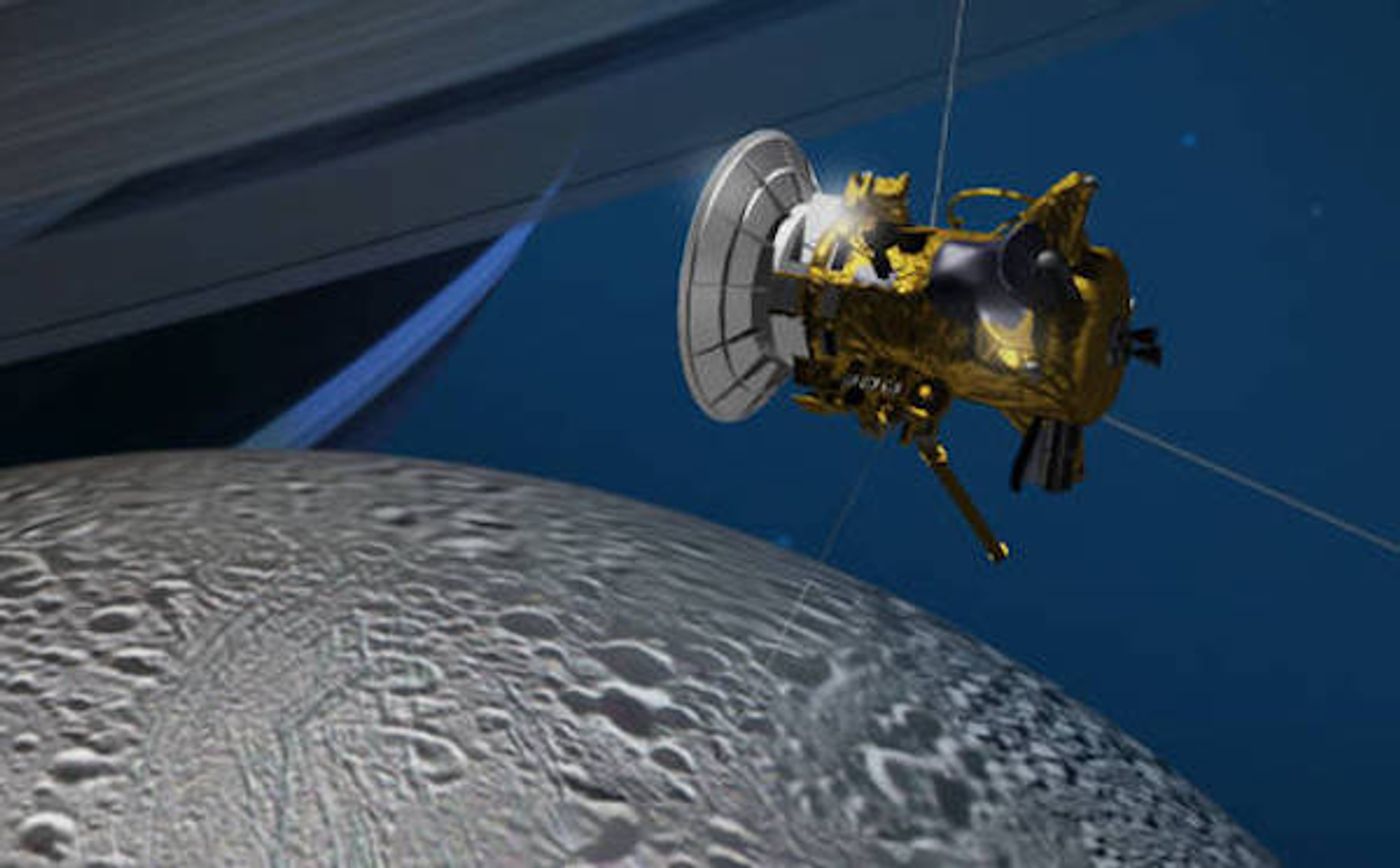Ever since scientists first found evidence of an ocean on Saturn’s moon, Enceladus, they’ve been tantalized by the possibility that there might be life there. Enceladus does have an icy surface, but beneath that, there is more liquid water than in all the bodies of water on Earth. There’s probably no light in this ocean, but there is heat from the Enceladus’ core. That’s exciting to space scientists, because, as we’ve recently discovered here on Earth, where there’s liquid water and there’s heat, there can certainly be life. Tomorrow morning (Wednesday the 28th), the Cassini spacecraft will sample Enceladus’ subsurface ocean and analyze it for signs of life.

‘How?’ you may be wondering. ‘Is Cassini going to land on Enceladus and drill through its icy surface?’ Well, it turns out, Cassini doesn’t have to. Enceladus sends water from its subsurface ocean up through its surface, into space. All Cassini has to do is fly through this water.
How does the water get into space? Saturn’s massive gravity tugs on Enceladus, deforming its core. This causes friction and heat. Scientists theorize that this heat allows the water on Enceladus to be liquid instead of just a massive chunk of ice. In 2005, Cassini found that Enceladus had geysers, or what scientists have termed “cryovolcanoes", erupting from its south pole. The scientists believe that these cryovolcanoes are venting water from the ocean beneath Enceladus’ surface. As soon as the water hits frigid space, it turns into snow. Even so, this snow contains organic molecules, which are always exciting to space scientists.
Tomorrow morning, traveling at about 19,000 miles an hour, Cassini will pass within 30 miles of Enceladus’ surface and, as Curt Niebur, a program scientist for the Cassini mission explained during a press conference “…collect the best samples ever from an ocean beyond Earth.” Cassini doesn’t have the equipment necessary for detecting life itself, but it can detect wether or not Enceladus has the ingredients needed to support life. When Cassini flies through the plumes from Enceladus’ cryovolcanoes it will be looking for two major things: complex organic molecules and hydrogen. The presence of hydrogen could be evidence of hydrothermal activity taking place at the bottom of Enceladus' ocean. Here on Earth, deep in the ocean, where there is no light, hydrothermal vents provide heat and nutrients that support life.
"Confirmation of molecular hydrogen in the plume would be an independent line of evidence that hydrothermal activity is taking place in the Enceladus ocean, on the seafloor," says Hunter Waite, from the Southwest Research Institute. “The amount of hydrogen would reveal how much hydrothermal activity is going on."
No one is expecting that life forms from Enceladus will fly up in a space ship and meet Cassini. If there’s life there, scientists expect it to be simple, similar to the creatures we find here on Earth by volcanic vents in the ocean. But hey, you never know. Keep an eye out later this week for findings about evidence of life on Enceladus and some fantastic pictures.
Source:
Popular Science









